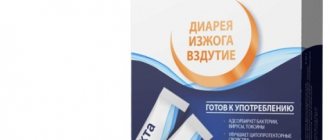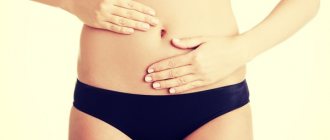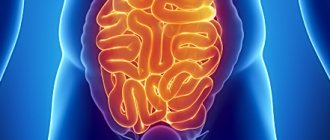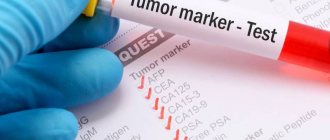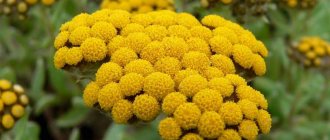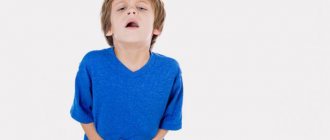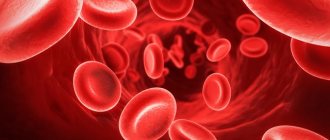According to medical statistics, over the past 8-10 years the number of requests for stomach diseases has increased sharply. Every third person has biliary dyskinesia, which can only be treated with medications. These data are only approximate, since the disease is not life-threatening, so some patients prefer not to see a doctor.
Diagnosis of the disease
There are 2 types of biliary dyskinesia: fast (hyperkinetic), slow (hypokinetic). Despite the fact that the basis of the disease is the same, the symptoms and treatment are significantly different. Therefore, a correct diagnosis already guarantees 50% of successful treatment.
If an individual exhibits severe symptoms, it is necessary to urgently seek help. No specialist will make an accurate diagnosis based only on a visual examination and the patient’s description of symptoms. A set of tests and medical procedures will be prescribed.
Basic diagnostic methods:
- Initial patient interview. Even in the absence of several signs of the development of the disease, the doctor must interview the patient in as much detail as possible.
- Identifying the patient's life history. This may be the likelihood of a hereditary disease, the presence of chronic diseases of the intestinal tract, taking third-party medications, the presence of benign neoplasms, type of activity, lifestyle.
- Visual inspection. The doctor examines the person’s skin, accessible mucous membranes, and examines the necessary organs by palpation.
- Submission of laboratory tests. Most often, the list is standard: general blood and stool test, biochemistry, stool test for worm eggs, lipid profile.
After receiving the results of the initial tests, the attending physician can make a preliminary diagnosis, and whether hypotonic or hyperkinetic dyskinesia is, the following procedures can accurately show:
- Ultrasound of the entire abdominal area.
- Ultrasound “with a test meal”. A relatively new method of examination, which is based on ultrasound, strictly on an empty stomach. After the procedure, the individual has a hearty breakfast, waits 40-50 minutes, and undergoes a repeat ultrasound.
- Duodenal sounding. Examination of the duodenum using a bowel-shaped probe. At the same time, bile is collected for research.
- Fibroesogastroduodenoscopy. Study of the mucous membranes of the stomach and esophagus.
- Cholecystography. The procedure is performed orally. The patient drinks a medical liquid, with its help you can view the degree of patency of the bile duct, the route followed and stagnation of the bile masses.
- Endoscopic retrograde cholangiopancreatigraphy. View the status of the bile ducts.
- Scintigraphy. During the procedure, a radioactive drug is injected intravenously into the patient, it penetrates the liver, and with the use of medical equipment it becomes possible to view the organ.
Specific examination methods are prescribed only by the attending physician. Often half of the above procedures are enough to make an accurate diagnosis.
Diagnostics
To make a correct diagnosis, a gastroenterologist will definitely refer you for additional studies:
- Blood chemistry. During a severe exacerbation, a blood test reveals an increase in the level of liver enzymes (alkaline phosphatase, etc.).
- Ultrasound of the liver and gallbladder, which allows you to assess the condition of the gallbladder and its ducts and identify stones.
- Duodenal intubation - collection of bile for analysis using a gastric tube. The procedure is also used for medicinal purposes to flush the bile ducts during bile stagnation. To do this, after collecting the bile, heated mineral water is introduced into the probe. The procedure is carried out on an empty stomach.
- Tests using special preparations. A medicinal substance (for example, secretin) is administered, which enhances the production of bile. If there is a disease, then bile does not have time to be released into the intestines, but accumulates in the gallbladder and ducts. There is an expansion of the ducts and an increase in the volume of the bladder, which is recorded using ultrasound.
- X-ray methods – cholecystography.
It is very important not to confuse biliary dyskinesia with other serious diseases that have similar symptoms!
How to treat
Treatment can be considered effective and complete if the full outflow of bile masses from the liver is restored. It will be impossible to do this only with the help of medications; an integrated approach to getting rid of the disease is selected.
The doctor will tell you in detail how biliary dyskinesia is treated after drawing up a plan. Classical therapy involves:
- A special, gentle daily routine.
- No stress, a good night's sleep, daytime rest.
- Daily walking.
- Elementary gymnastics several times a day.
To restore the full functioning of the digestive system, it is necessary to follow a strict diet; constipation may occur frequently with biliary dyskinesia. All types of spicy, salty foods and preserves are excluded. A minimum amount of salt and sugar is allowed. It is advisable to adhere to the drinking regime: less tea, coffee, more mineral water. The doctor should suggest a specific brand of medicinal water.
You can eat often, but in small portions.
Among the medications prescribed are enzyme, choleretic, and cholespasmolytics.
Depending on the degree of progression of the disease, the patient’s age, and the general condition of the body, the following supportive procedures are prescribed:
- Complete cleansing of the gallbladder (tubage).
- Artificial cleansing of the duodenum from bile masses.
- Improvement with electrophoresis.
- Diadynamic therapy.
- Cleansing with leeches.
- Several acupuncture sessions.
There are no exacerbations of dyskinesia, so emergency treatment or surgery are not prescribed. If a patient experiences neuroses, he is referred to a psychotherapist.
If the motor function of the gallbladder is impaired, even experienced specialists recommend paying attention to traditional medicine recipes. Healing infusions and decoctions effectively combat congestion, obstruction, and inflammation of the bile ducts.
The following are considered the safest:
- To prepare you will need elecampane root - 10-12g, calendula - 15g, marshmallow - 10-12g, chamomile flowers - 10g.
Mix all the above ingredients, use 2 large spoons of the resulting mass. Fill in 0.5l. clean water, bring to a boil, leave for 50-60 minutes. Strain through cheesecloth, take 3 times a day before main meals. Course – 21 days.
- For preparation you will need plantain - 30-40g, calendula - 10g, sage - 10g, 20g each. mint, rosehip, 20g each. goose cinquefoil, raspberry leaves.
Prepare according to the same scheme as described above.
In case of a painful attack of hypokinetic biliary dyskinesia, it is recommended to apply a cool compress to the area of the right rib for a short period of time. If contractile activity increases sharply, you can apply a hot compress.
Immediately after waking up, it’s good to drink a glass of slightly warmed milk with freshly squeezed carrot juice. Mix in equal proportions.
For hypertensive dyskinesia, an enema with a composition of corn oil is allowed. To prepare the solution you will need 1 liter of water at a comfortable temperature and a large spoon of oil.
It is better to discuss all methods of alternative medicine with your doctor before use.
Choleretics
Choleretics actively stimulate the secretory function of the liver. Medicines may have differences in composition and methods of action on the body. According to this characteristic, medications are divided into the following groups:
- Herbal remedies made from medicinal herbs, extracts of various plants and dietary supplements. Herbal components help eliminate pain and eliminate signs of the inflammatory process.
- Medicines that contain a large number of substances of animal origin. This category of drugs can stimulate the gastrointestinal tract (gastrointestinal tract), prevent the process of fermentation and rotting in the intestinal area.
- Synthetic medications that reduce the volume and viscosity of bile. A synthetic medicine can reduce pain.
Allohol
Allochol is considered the best drug, which is based on components of animal origin. The effective medicine contains a large amount of nettle leaves, garlic oil, medical bile, and activated carbon. The medication is able to improve the motility of the gastrointestinal tract in a short period of time, eliminate the process of decay, and promote the production of bile.
Allochol is not recommended for use when:
- acute hepatitis;
- jaundice of any severity;
- the formation of tumors leading to compression of the cystic ducts;
- pregnancy or lactation.
The tablets are taken for 30–40 days. After each meal, it is recommended to drink 1-2 capsules. The daily dose should not exceed 8 capsules.
Holosas
Holosas is a natural choleretic medicine that improves the metabolic process in the liver and enhances the secretion of bile. The active components of the drug reduce the level of bile viscosity.
Holosas is made on the basis of:
- rose hips;
- vanilla and sugar;
- purified water;
- citric and malic acid;
- vitamin B complex;
- vitamins A, C, E and K.
Contraindications include the presence of diabetes mellitus, hypersensitivity to the active components of the medication, calculous cholecystitis, blockage of the bile ducts. It is unacceptable to treat children under 3 years of age with choleretic drugs. As a rule, adults are prescribed to take 1 tsp. the drug several times a day.
Oxafenamide
Oxafenamide helps to quickly eliminate pain and eliminate cholesterol stones. The duration of therapy is usually within 14–21 days. Treatment with Oxafenamide is unacceptable for gastric ulcers, the development of an inflammatory process, degenerative changes in the liver, and individual intolerance to the components of the medication.
Flamin
Flamin belongs to the group of choleretic drugs. Flamin has anti-inflammatory and antispasmodic properties. The drug is made on the basis of:
- potato starch and corn;
- magnesium carbonate;
- milk sugar;
- immortelle flowers;
- calcium stearate.
Medicines must be taken in full compliance with the recommended dosage. Each capsule is taken with plenty of water. For different age categories, the daily dosage will be different:
- adults and elderly people should drink 1-2 capsules 3 times a day;
- for teenagers, 1 capsule 2 times a day will be enough;
- Children aged 5–10 years should take 1 tablet per day.
The duration of the course of therapy directly depends on the severity of the disease. Typically, treatment takes 30–50 days. It is not recommended to take Flamin if you have jaundice, peptic ulcers, or individual intolerance to the active components of the drug.
Symptoms and treatment of hyperkinetic dyskinesia
With hyperkinetic biliary dyskinesia, the symptoms are quite pronounced:
- Sharp pain on the right side of the ribs, extending into the shoulder blade and shoulder.
In most cases, pain occurs sharply and frequently. Possible:
- nausea, diarrhea,
- heavy sweating,
- attacks of tachycardia,
- headache,
- feeling of weakness,
- change in skin color.
In the hyperkinetic form of the disease, neuralgia is often detected. Attacks can occur with frequent and prolonged stress.
Treatment of dyskinesia of the hyperkinetic type is carried out comprehensively. The most commonly prescribed are analgesics and antispasmodics. In order for the bile masses to begin to flow away, choleretic drugs are prescribed on their own. Additionally, the following may be assigned:
- Xanthines,
- Cholespasmolytics,
- M-anticholinergic drugs.
To correct and normalize the acid level of the stomach, it is recommended to drink special water: Truskavets water, “Naftusya”, diluted Morshyn water. Additionally, they normalize liver function and relieve tension in the biliary sphincter.
Physiotherapeutic procedures include electrophoresis with papaverine and ozokerite applications.
Symptoms and treatment of hypotonic dyskinesia
The main distinctive feature of the manifestation of hypotonic dyskinesia of the hypotonic type can be considered a constantly present dull pain. If an individual is nervous or has eaten too much unhealthy, fatty food, the pain may intensify and heaviness appears. Main symptoms:
- Lack of appetite.
- Nausea.
- Bitter taste in the mouth.
- Bloating.
- Periodic, prolonged constipation.
During palpation of the diseased organ, unpleasant sensations arise.
Dyskinesia of the gallbladder of the hypotonic type can be corrected. Unlike the hyperkinetic type of the disease, procedures with heat are contraindicated here. Cholekinetic drugs are recommended for use. After just 5-7 minutes of proper use, the patient’s condition improves, the sphincter of Oddi relaxes, and the contractile activity of the bladder is restored. The use of duodenal intubation is effective. It is recommended to drink water with a high level of mineralization: Morshynskaya, diluted with warm water.
Your doctor may prescribe medications that stimulate faster gallbladder motility.
In case of hypotonic type of diarrhea, physiotherapeutic procedures such as electrophoresis, massage, paraffin therapy, UHF, Bernard currents, and electrical stimulation are prescribed.
If you have hypotension, you can do tubeless drainage yourself, no more than 2 times a week. To complete this you will need Barbara salt or olive oil. 20-30 gr. material per 100 ml of hot water. After the procedure, the patient needs to lie on his right side and rest for 1.5-2 hours.
Symptoms and treatment of hypertensive dyskinesia
All symptoms of hypertensive biliary dyskinesia appear against the background of increased bladder tone. Main features:
- dull pain on the right side, radiating to the shoulder blade, shoulder, chest,
- sudden onset of discomfort
- nausea,
- diarrhea, diarrhea,
- tachycardia,
- sweating,
- attacks of weakness,
- bad dream,
- irritability.
In most cases, with gallbladder dyskinesia, attacks occur after stress or emotional overload.
The main goal of treating the diagnosis of “biliary dyskinesia of the hypertensive type” is to normalize the functioning of the process of formation and removal of bile masses. It is very important to properly build a daily routine and diet, to eliminate or treat existing diseases of the endocrine system and gastrointestinal tract.
The attending physician must draw up a detailed therapeutic diet plan. It is necessary to exclude all junk food and fats. Work on normalizing the state of the nervous system. For this purpose, sedative and neurotropic drugs with a calming effect are recommended. In difficult cases, tranquilizers are prescribed. For gallbladder diseases, treatment can be radically different.
Choleretic drugs for dyskinesia
Currently, therapy for biliary dyskinesia is carried out at a fairly high level. In the process of choosing a choleretic agent, the doctor must take into account its chemical structure, all possible therapeutic effects, and the individual characteristics of the anatomical structure of the body. Means and medications should be selected taking into account the individual characteristics of the body.
There is a clear classification of choleretic drugs for biliary dyskinesia:
Choleretics
They help a weakened body produce a sufficient amount of bile mass for normal digestive processes.
This type of drug is divided into subtypes:
- True choleretics. Promote the full production of bile through the synthesis of bile acids. These drugs for the treatment of hypomotor type diseases are created on the basis of raw materials of plant or animal origin.
- Synthetic choleretics. Choleretic agents created on the basis of chemical substances.
- Healing herbs for the treatment of biliary dyskinesia. They are used in the form of decoctions and infusions.
- Hydrocholeretics. Preparations for this type of treatment contain substances that help normalize the amount of bile in the body by diluting the existing biomaterial, that is, the volume of bile masses increases due to the increased water content.
Cholekinetics
Choleretic drugs for dyskinesia of the hypokinetic type significantly improve the patient’s condition due to specially created drugs that promote the normal outflow of bile masses due to an increase in the general tone of the gallbladder, for example, the hyperkinetic form. During this period, the bile ducts should be relaxed.
Cholespasmolytics
Prescribed to patients in whom the affected organ is still active, the outflow of produced bile is carried out through complete relaxation of the muscle mass of the bladder and bile ducts.
Drug treatment of biliary dyskinesia in adults with cholespasmolytics implies their division into subtypes:
- Anticholinergics.
- Antispasmodics of synthetic origin.
- Antispasmodics of plant origin.
- Medicines that are recommended to be taken to prevent recurrent stone formation. Separately taken drugs contribute to the gradual dissolution of existing ones. Do not forget that in addition to the healing effect, this can cause side symptoms in the form of movement of large stones.
Classification
Drugs in this category are divided into several groups:
- Choleretics – increase bile production. They are mainly made from plant or animal raw materials, but there are also synthetic products made by organic synthesis;
- cholekinetics – stimulate the flow of bile from the bladder into the intestinal lumen;
- Cholespasmolytics – help open the bile ducts and relieve spasms;
- preparations made from plants;
- group of hydrocholeretics and mineral water.
In addition to taking the above medications, experts recommend that patients adhere to a certain diet. Systematic intake of mineral water has proven itself well. The water should have a low degree of mineralization.
The most effective drugs
In most cases, natural choleretics are recommended to stimulate bile secretion. These include: Allohol, Liobil, Cholenzym, Vigeratil, Livodex.
The category of synthetic drugs includes: Gepabene, Nicodin, Gimecroon, Cyclalone.
In standard cases, cholekinetics are used for complex biliary treatment. Most often, these are herbal preparations that can be taken as tablets, tinctures, or powders. You can prepare them yourself from herbs. At the pharmacy you can buy Holosas, sorbitol-based powders, Berberis, Solaren, Urolesan, Holemaks.
For painful attacks, experts recommend taking painkillers, cholespasmolytics: Hofitol, Duspatalin, No-shpa, Iberogast, Trimedat.
If the attack is weak, then you can drink magnesium. In most cases, it is recommended for children and pregnant women, especially during the development of biliary tract diseases.
To relieve pain attacks, you can take the drug recommended by your doctor 30-40 minutes before each meal. It will prevent inflammation, promote normal formation of bile masses, and belching will disappear.
Treatment of biliary dyskinesia in children
The child may also have problems with the gallbladder. There are drugs that are approved even for the smallest: Allohol, Osalmid, Magnesia, Valerian, Papaverine, No-shpa, Spasmol. The use of tonic drugs is the safest during the treatment process.
The required dosage is calculated individually only by the attending physician.
If the disease is in its initial stage and the body is actively fighting it, then it makes sense to try treatment with mineral water. Borjomi, Essentuki, Slavyanovskaya are considered the most effective; in some cases, these liquids are mandatory. Even children are allowed to take mineral liquids. Additionally, you can take healing infusions, decoctions, and dilute herbal powders in the recommended mineral water.
Cholekinetics
The action of the choleretic drug is aimed at normalizing the functioning of the gallbladder and eliminating unpleasant pain.
Magnesium sulfate
Magnesium sulfate has choleretic and laxative properties. To achieve a choleretic effect, you will need to dissolve the powder in a glass of warm liquid. The solution is taken after each meal, 1 tbsp. l. If you take it immediately after waking up in the morning, you can achieve a laxative effect.
Cormagnesin
Cormagnesin belongs to the cholekinetic group of drugs. Magnesium contained in the drug is the main microelement of the drug. It takes part in a variety of reactions. And magnesium is also involved in the regulation of cellular permeability and neuromuscular transmission.
The dosage of the drug depends on the level of magnesium deficiency in the patient. Adult patients, as a rule, are slowly administered 1 ampoule of Cormagnesin 200 intravenously. The first few ml should be injected within 3 minutes. Before the injection, the patient is placed on a couch. The drug is re-administered a day later.
It is contraindicated to prescribe treatment with Cormagnesin in cases of hypersensitivity to the active components of the drug, the presence of bradycardia, impaired renal function, or urolithiasis. During therapy with Cormagnesin, side effects such as low blood pressure, conduction disturbances and dilatation of peripheral vessels may develop.

